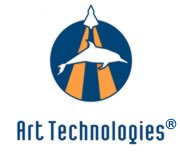

Space. It's a dangerous place--an extreme environment hostile to human beings. The launch in 1957 of Sputnik, the first artificial satellite, heralded not only the beginning of the space age, but what would ultimately become another danger in space: orbital debris.
Forty-six years and thousands of launches later, the near-Earth environment of space has become heavily populated with orbital debris. The heaviest concentration of orbital debris is in low-Earth orbit, becoming less dense as it progresses out to geosynchronous orbit. These orbital debris objects consist of spent rocket bodies, various space hardware, non-functioning satellites, and fragments from explosions. According to information provided by the Aerospace Corporation in California, there have been more than 124 verifiable breakups in space. Collisions and explosions are usually the cause of breakups, with explosions being the main source.
The Aerospace Corporation report goes on to say: Approximately 70,000 objects estimated to be 2 cm in size have been observed in the 850-1,000 km altitude band. NASA has hypothesized that these objects are frozen bits of nuclear reactor coolant that are leaking from a number of Russian RORSATs.
The U.S. Space Command, using a variety of radars, presently tracks over 10,000 orbital debris objects. Orbital debris objects as small as 10 cm in low-Earth orbit and 1 m in higher orbit are being tracked. The Naval Research Laboratory in Washington D.C. uses this tracking data to precisely predict the location in space of any of these orbital debris objects.
The tracking data is also used to predict the approximate time and location of any orbital debris objects that are about to re-enter the Earth's atmosphere. Each year, depending on the altitude and decay of their orbits, a number of orbital debris objects in low-Earth orbit re-enter and burn up in the Earth's atmosphere. A few of these orbital debris objects manage to survive their fiery re-entry, although most that do, fall into the ocean since two-thirds of the Earth is covered by water. On rare occasions some pieces of orbital debris fall on land. (Fig.1)
COLLISION II, a site-specific interdisciplinary work, focusing on the serious problem of orbital debris, results from a current collaboration begun in June, 2003, between artist Richard Clar, the Naval Research Laboratory in Washington D.C., and French composer Marc Battier.
Using a massively paralleled computer and tracking data from the U.S. Space Command, the Naval Research Laboratory precisely predicts the orbits of more than 10,000 orbital debris objects that now comprise the orbital debris catalog.
To create COLLISION II, Richard Clar selected 192 orbital debris objects in low-Earth orbit from all of the space-faring nations in much the same fashion as he did in 1995, when he created the first COLLISION orbital debris space sculpture. The 192 designated orbital debris objects that now make up the orbiting constellation sculpture COLLISION II are located in a region of space defined by the following parameters: Between 96 and 104 degrees of inclination and an altitude of 450 to 800 km.
Using a program called COMBO (Calculation of Miss-Distance Between Objects), the Naval Research Laboratory has produced the video simulation that depicts the constellation sculpture COLLISION II (color-coded by country of origin), set against the entire 10,000-object orbital debris catalog. (Fig. 2) This video simulation views the orbiting constellation sculpture from the vantage points of low-Earth orbit and geosynchronous orbit during a twelve-hour period that is reduced to twelve minutes.
COLLISION II extends the parameters of Earth-bound artset in motion by the first COLLISION piece with the strong conceptual aspect of the fourth-dimension element of time.
Marc Battier, French composer and Université de Paris-Sorbonne Professor, formerly head of musical and software documentation at IRCAM, composed the exciting music for COLLISION II based in part on the orbital debris data provided by the Naval Research Laboratory. (See statement by Marc Battier)
Additional information about Richard Clar may be found on his web site: Art Technologies
Contact Richard Clar by e-mail: richard at arttechnologies.com
Image credit: The Naval Research Laboratory